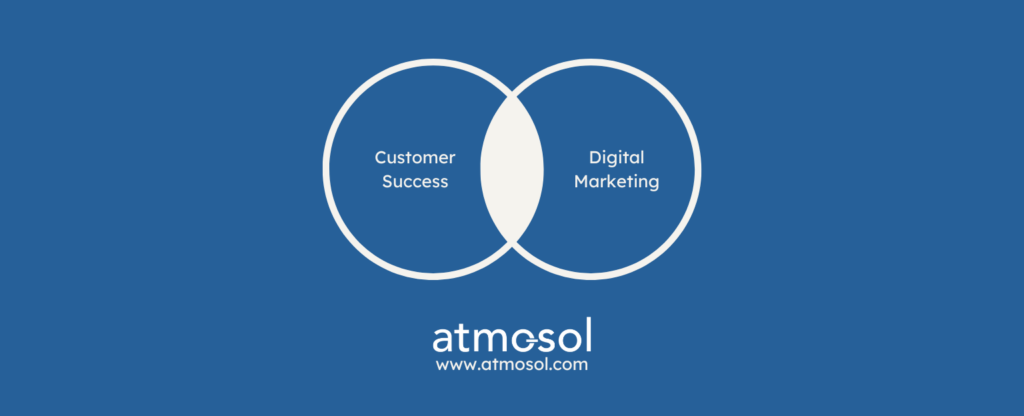As the digital age advances, businesses must adapt and embrace new strategies to stay ahead. Two pillars holding this new world aloft are customer success and digital marketing. Together, they can unlock remarkable growth potential for your organization.
Customer Success: The Heart of Business Growth
Customer success is the art of ensuring your customers achieve their desired outcomes while using your product or service. It is proactive, predictive, and most importantly, customer-focused. It represents a shift from the traditional business approach – from being sales-driven to becoming customer-centric. It’s no longer just about securing a sale; it’s about cultivating a relationship that fosters success for your customers.
A company that understands its customers’ needs and consistently helps them succeed can create a fiercely loyal customer base. Customer success leads to retention, upselling, cross-selling, and advocacy. It is a long-term investment that pays dividends by growing customer lifetime value (CLTV).
Digital Marketing: The Bridge to Customers
Digital marketing, on the other hand, is the application of marketing strategies implemented via digital channels. It includes search engine optimization (SEO), content marketing, social media, email marketing, and more. Its purpose is to reach customers where they’re most likely to be – online.
In today’s digital age, traditional marketing methods may fail to reach the majority of your potential customers. Digital marketing offers a broader reach, demographic targeting, real-time analytics, and the ability to engage customers directly. It offers a wealth of opportunities to grow brand awareness and attract new customers.

The Powerful Intersection of Customer Success and Digital Marketing
When customer success and digital marketing combine, they form a symbiotic relationship that bolsters customer retention and acquisition. Here’s how:
- Data Integration: Both domains rely heavily on data. Digital marketing generates a wealth of data about customer behaviors, preferences, and interactions. Customer success teams can utilize this information to understand customer needs better, personalize their experience, and predict future behaviors.
- Enhanced Personalization: Personalization is the key to winning customers’ hearts. Digital marketing provides insights about what customers are looking for, enabling customer success teams to tailor their interactions and provide solutions that align with individual needs. This helps to foster a strong, long-term relationship between the customer and the company.
- Feedback Loop: The information flow is a two-way street. Feedback from customer success teams can guide digital marketing strategies. Understanding why customers stay or why they leave provides invaluable insights that can be used to fine-tune marketing campaigns and attract the right audience.
- Customer Advocacy: Satisfied customers can become brand advocates, contributing to digital marketing efforts. Their testimonials, reviews, and word-of-mouth referrals can amplify your brand’s credibility and reach.
In the age of the customer, success lies in understanding and fulfilling their needs. This is where customer success and digital marketing intersect. By integrating these two powerful strategies, businesses can ensure they not only attract customers but also retain them, nurturing these relationships into powerful, long-term alliances.
Having acknowledged the powerful convergence of customer success and digital marketing, it’s crucial to implement strategies that maximize their synergy.
Here are some actionable steps businesses can consider to maximize their synergy between customer success and digital marketing.
Unify Your Teams
Start by breaking down silos and encouraging collaboration between your digital marketing and customer success teams. Regular meetings, shared goals, and joint projects can help foster teamwork. The two teams should communicate seamlessly, sharing insights, and leveraging each other’s expertise.
Leverage Technology
Utilize customer relationship management (CRM) software and marketing automation tools to streamline communication and data sharing. These platforms can offer insightful data analytics, allowing teams to gain a comprehensive view of the customer journey and tailor their strategies accordingly.
Align Goals and Metrics
Both teams should align their objectives around a common goal – customer satisfaction. Key performance indicators (KPIs) such as customer satisfaction score (CSAT), net promoter score (NPS), and customer lifetime value (CLTV) should be considered alongside digital marketing metrics like website traffic, social engagement, and conversion rates.
Content Creation
Use insights from customer interactions to guide content creation. The content should be engaging, informative, and designed to provide value to the customer. Case studies, webinars, and educational blogs can showcase how your product or service can resolve customer pain points.
Proactive Customer Engagement
Leverage digital channels to engage with customers proactively. Regular check-ins, personalized messages, and interactive content can enhance the customer experience, leading to increased loyalty and advocacy.
Embrace Feedback – Customer Success and Digital Marketing
Encourage customers to share their experiences and feedback. This could be through surveys, social media engagements, or one-on-one conversations. Use these insights to iterate and improve your products or services.

By investing time and resources into integrating customer success with digital marketing, businesses can not only ensure that their customers are achieving their goals but also pave the way for new customers to come aboard. This holistic approach builds a bridge between acquisition and retention, creating a self-sustaining cycle of growth.
In this digital age, the fusion of customer success and digital marketing is not just a trend—it’s the future of business. Organizations that embrace this symbiosis will thrive, while those that ignore it may risk falling behind. Embrace the partnership of customer success and digital marketing and propel your business into a future where customers don’t just succeed—they thrive.
In conclusion, the bond between customer success and digital marketing is not only essential; it is inevitable. The integration of these two domains is already redefining the business landscape. Businesses that recognize this and adapt accordingly will enjoy robust growth and longevity in an ever-evolving digital world. Customer success is the heart of business growth, and digital marketing is the bridge to your customers. Together, they form a dynamic duo, ready to propel your business into the future.
